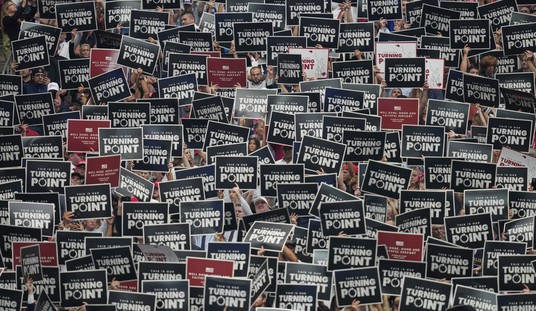The ongoing SJW battles over transgenderism took another sharp turn this week when Attorney General Jeff Sessions issued a memo on the subject dealing with anti-discrimination lawsuits. During the Obama administration, Title VII of the Civil Rights Act was expanded by executive fiat to blur the word “sex” (as in male or female) into the more recent, trendy, but wholly unscientific idea of “gender” as meaning something different. This led to questions of whether or not workplace discrimination protections apply to so-called transgender individuals.
Now, with a new memo having been issued, the federal government’s position in any pending or future lawsuits has changed. Sex and gender will once again refer to a person’s actual, biological gender, not how they feel about it. This will likely impact some pending cases which the DoJ had previously taken on, siding with plaintiffs who claimed discrimination on that basis. Unfortunately, what this really hammers home is precisely how inefficient it is to try to specifically define the rights of American citizens broken down into various pigeonholes of classification. (NY Times)
Attorney General Jeff Sessions on Thursday ordered the Justice Department to take the position in court cases that transgender people are not protected by a civil rights law that bans workplace discrimination based on sex. The move was the Trump administration’s latest contraction of the Obama-era approach to civil rights enforcement.
The dispute centers on how to interpret employment protections based on “sex” in Title VII of the Civil Rights Act of 1964. In December 2014, the attorney general at the time, Eric H. Holder Jr., ordered the Justice Department to view “sex” as encompassing gender identity, extending protections to transgender people.
But in a two-page memo to all United States attorneys and other top officials, Mr. Sessions revoked Mr. Holder’s directive. The word “sex” in the statute, Mr. Sessions said, means only “biologically male or female,” so the Civil Rights Act does not ban “discrimination based on gender identity per se, including transgender status.”
This decision is going to impact the relatively dry, legal issues swirling around this controversy and questions of discrimination, but hopefully will also further open a desperately needed discussion of the underlying problem with this particular SJW battle.
On the legal front, cases such as the one where Eric Holder took the side of a transgender employee claiming discrimination will see the Justice Department doing a 180 degree turn. That’s going to cause plenty of confusion, but as I alluded to above, it also highlights the inherent problems with the way the Civil Rights Act has been interpreted and applied over the years. A more basic, fair, and constitutionally sustainable approach to discrimination lawsuits would be to say that no employer can discriminate against any employee. Hiring and firing decisions should be made on a basis of the performance of the worker and the business needs of the company. Bias toward workers based on other, reductive factors has no place in the company.
Unfortunately, by trying to define which Americans are protected and which are not, we’ve created lists of politically preferred groups. The obvious outcome is that some people will inevitably be left off the list, and now you’re in for a fight. Think of it as a parallel case of Black Jobs Matter versus All Jobs Matter.
Going beyond the legal realm, we are seeing other instances of people and institutions pushing back against the underlying, unscientific idea that gender is something one can simply change on a whim or define in exotic fashions beyond the boring old XX vs. XY chromosomal structure. The Pope even got in on the action recently, declaring that, “this ‘‘utopia of the neutral’’ jeopardizes the creation of new life.”
Google was called out on social media this week for branding a video from Prager University as being “dangerous” because it deals with questions of gender in a frank and scientific fashion. If you haven’t seen that video, I highly recommend you click through and watch it. (It’s under five minutes.) PragerU offers some much needed perspective, but they also highlight the story of transgender fighter Fallon Fox, a man who has been allowed to fight in MMA matches as a woman.
This is one of those stories you probably didn’t see much on CNN or in the Washington Post because it blows up the gender confusion narrative. For some time now I’ve been asking questions about what happens if men claiming to be women are allowed to compete in sports such as track and field, cycling or tennis. (You’ll be hearing more about the tennis question here at Hot Air later today, by the way.) But once we get into the MMA octagon, the debate is cranked up to a massively more dangerous level.
Fallon Fox was allowed to enter the arena and fight Tamikka Brents, an actual woman and accomplished fighter. Fox quickly “won a TKO,” in the process fracturing the woman’s skull and sending her to the ER where she had seven staples put in her head. Brents initially objected to the horrific beating she took at the hands of a man but was quickly silenced by the PC police and recanted her objections. As the narrator for Prager University put it, in the old days, if a man beat a woman badly enough to put her in the hospital he’d have gone to jail. Now he can be paid for it.
This battle in the “social justice” field is far from over and the outcome is uncertain. But with the DoJ jumping into the action, perhaps there’s hope after all.







Join the conversation as a VIP Member